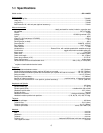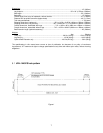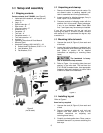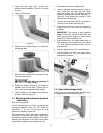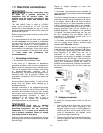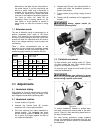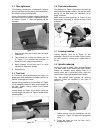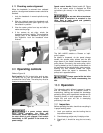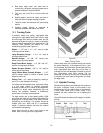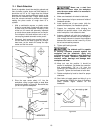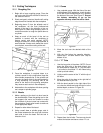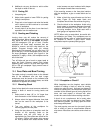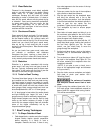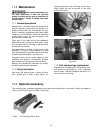
14
8.13 Checking center alignment
When the headstock is returned from outboard
position, the alignment between centers should be
checked.
1. Lock the headstock in normal spindle turning
position.
2. Slide the tailstock toward the headstock until
the centers almost touch (see Figure 18). Lock
the tailstock in position.
3. View the center points from top and side to
make sure they align.
4. If the centers do not align, unlock the
headstock and pivot it slightly. There should be
enough “play” in the headstock to adjust for
this alignment. Lock the headstock when
finished.
Figure 18
9.0 Operating controls
Refer to Figure 19.
On/off switch (A): Pull to start lathe, push to stop.
The safety key (A
1
) can be removed to prevent
unauthorized use of lathe. The safety key must be
inserted to restart the lathe.
Figure 19
If a power outage should
occur during operation, the lathe will
immediately restart when power is resumed if
the start switch is still engaged. Push switch
immediately to OFF position in the event of a
power outage.
Speed control handle: Rotate handle (B, Figure
20) to set speed, which is displayed as RPM
(revolutions per minute) in the adjoining window
(C).
Do not start lathe at maximum
speed when a workpiece is mounted in the
lathe. Start at lower speed and gradually
increase to desired speed.
Figure 20
The JWL-1440VS contains a Reeves or “split-
pulley” system.
As speed is increased, via the speed change
handle, the spindle pulley widens and the belt
drops down to the smaller diameter between the
pulley halves. Conversely, the motor pulley, which
is spring-loaded so that it adjusts automatically to
the movement of the spindle pulley, gets narrower,
drawing the belt outward toward the larger
diameter. When the speed is decreased, the
pulleys act in opposite fashion.
Change speed while the lathe
spindle is turning to avoid overstressing the
belt.
10.0 Operation
The information which follows is general in nature
and not intended to be a complete course in
woodturning. Nothing can replace the knowledge
gained by talking with experienced woodturners or
consulting books or trade magazines. Above all,
simple trial and error will aid in developing
proficiency in the craft.
10.1 Inspection
Before operating the lathe, check that everything is
in proper working order:
1. Level your machine; use the leveling feet to
help reduce vibration.
2. Check bearings; adjust only if endplay exists.
3. Check belt; it should be snug but not overly
tight.



